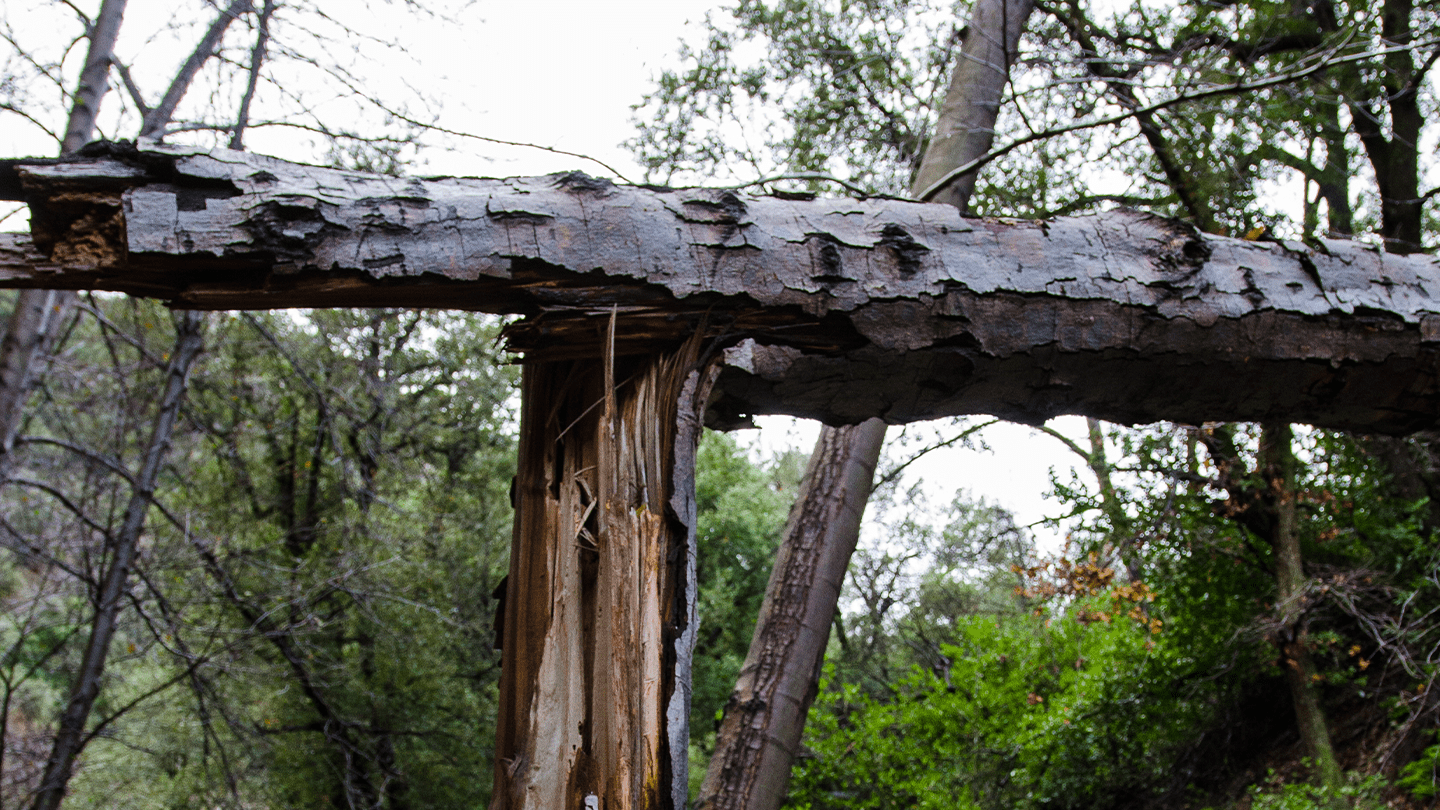If you were in Los Angeles over the weekend, you no doubt felt the wrath of the winds! A wind advisory remained in effect across Los Angeles, Ventura, and Santa Barbara counties throughout the weekend with gusts ranging from 25 mph to 50 mph across the region. Unfortunately, the winds brought dangerous conditions to the city. Trees were knocked over, causing hundreds of power outages, injuring pedestrians, and damaging property. You might be worried about the next storm that happens — will you be safe from falling trees? Fortunately, there are many ways to ensure that your trees stay safely in the ground — even during wind storms!
You know that trees are beneficial to both the environment and your health. You also know that you need to keep yourself, your community, and your property safe. How can you ensure that your tree withstands wind storms and prevent your trees from falling?
Start with planting properly
We can’t control the weather, which means that we also can’t control storms. The good news, however, is that we can control the way that we plant our trees to make them as weather-resistant as possible. It’s best to start by practicing the basic elements of good tree care, as trees that are planted properly are less likely to succumb to strong winds and fall over. Make sure the roots of your tree have plenty of room to grow, and stake young trees until they are able to stay in place on their own. Want to test-run a tree planting before you dig in (pun intended)? TreePeople volunteer events are a great way to learn the basic principles of planting your first tree!
Practice proper pruning
You generally shouldn’t prune your tree more than once every 3-5 years, but sometimes you will need to prune more often for safety purposes. Correct pruning can eliminate dead wood (read: falling branches) and reduce wind resistance that is usually responsible for tree failure. Whenever you set out to prune, you should first take out diseased, broken, or dead limbs in order to improve the overall health of the tree. Always avoid dead-topping your trees, as this can harm your tree and ultimately lead to tree failure. Incidentally, pruning palm trees requires special care, and can sometimes do more harm than good in preventing storm damage. When in doubt, reach out to a certified arborist for advice.
Group your trees
According to the Arbor Day Foundation, trees that are isolated in a landscape are at greater risk of falling due to storm winds. Where possible, plant a group of five or more trees sharing the same soil space. This arrangement offers a degree of mutual protection, root stability, and reduction of wind velocity. In addition, streets that have a population of well-maintained trees of diverse species are more resistant to attacks by invasive insects and diseases, furthering the overall health of your tree.
Consider the species you’re planting
When it comes to planting for major weather events, native is best. These plants will have adapted to Southern California’s weather patterns, and will be the best-equipped to survive amid extreme weather conditions.
Since some trees are more susceptible to storm damage than others, species diversity can provide protection against the loss of trees due to bad weather. The National Arboretum’s formula for species diversity is that there should be no more than 10 percent of any one species, 20 percent in the same genus, and no more than 30 percent belonging to one family. When uniformity is considered a ‘must,’ try to scatter the trees of the same species, leaving other species in-between.
What if my tree has already fallen and caused damage?
It can be incredibly distressing when a fallen tree causes damage to itself or your property, and the situation requires immediate intervention. Get yourself and other members of your household or community to safety, as falling trees can be life-threatening. Check for fallen power-lines and other safety hazards in your immediate area. Once in a safe situation, call 3-1-1 to report the fallen tree or limb. If the tree is blocking your street or driveway, LA’s Bureau of Street Services Urban Forestry division will respond and move the fallen tree. If the tree isn’t causing an immediate safety concern or hazard, call a certified arborist, who will advise you on next steps for removal and may even be able to tell you why the tree succumbed to the gusts.
While it’s inevitable that some trees will fall during heavy storms, many of these fallings can be prevented with the proper preparation, especially during the planting phase. If you have a tree near you that’s making you feel uneasy when the wind starts to pick up, reach out to a local arborist to determine whether the tree is cause for concern.

